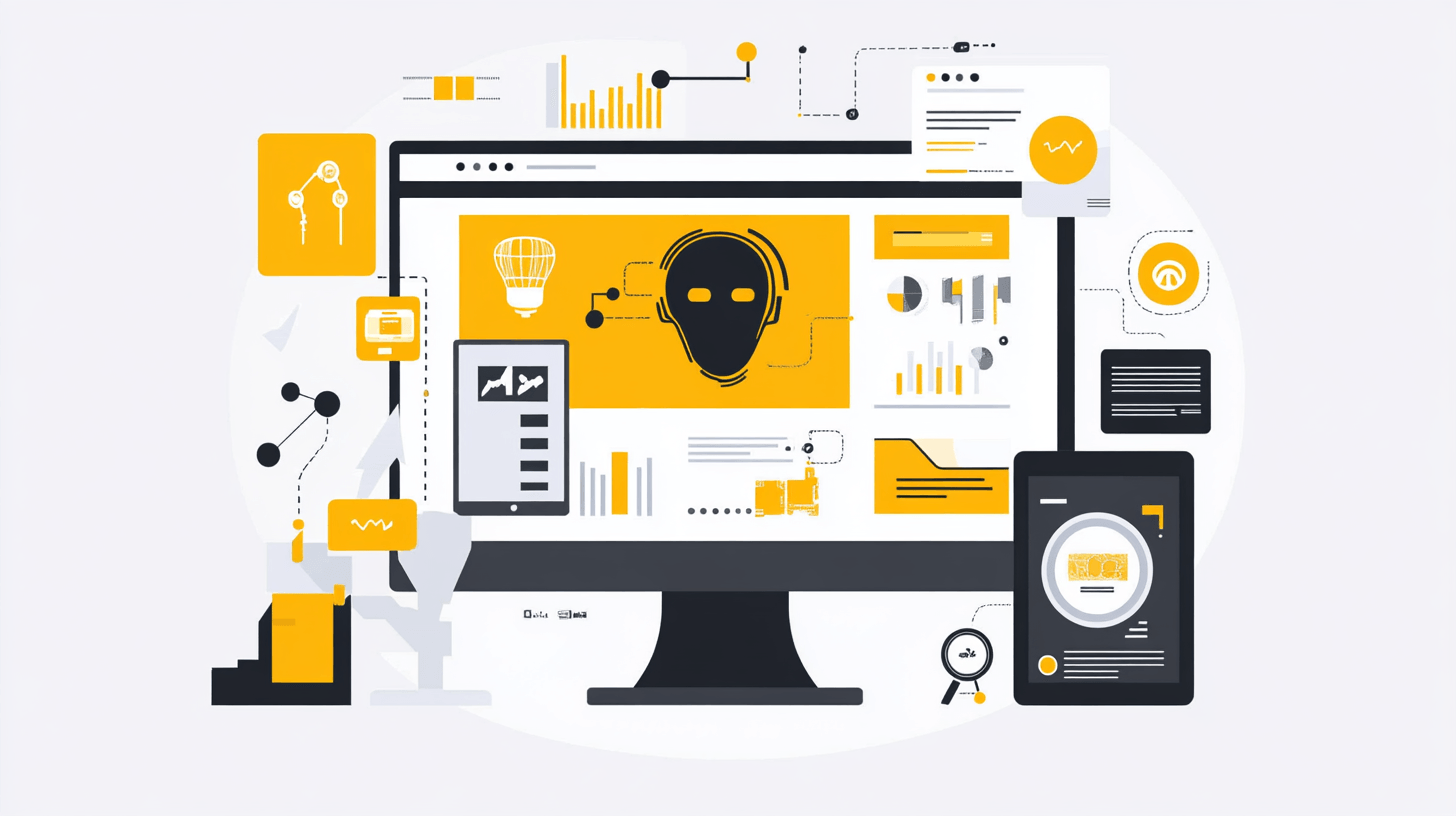In today's digital-first world, businesses need to provide seamless and engaging digital experiences to their customers across multiple channels and devices. MACH architecture is a modern approach that enables organizations to create flexible, scalable, and future-proof digital experiences that meet these needs. The four key principles of MACH architecture: Microservices, API-first, Cloud-native, and Headless, provide a framework for building applications that can easily adapt to changing business needs and customer expectations. In this blog, we will explore these principles in detail and discuss the benefits and examples of using MACH architecture for your digital projects.
What is MACH Architecture?
MACH architecture is a modern approach to building digital experiences that prioritizes flexibility, speed, and scalability. The acronym MACH stands for Microservices, API-first, Cloud-native, and Headless, which are the four key principles that underpin this approach. In MACH architecture, applications are built as a collection of independent, modular services that communicate with each other through APIs. The front-end presentation layer is separated from the back-end content management system, enabling content to be created and managed independently from the presentation layer. MACH architecture enables organizations to create applications that are easy to maintain, scale, and adapt to changing business needs, and to deliver more personalized and engaging experiences for their users.
Principles of MACH Architecture
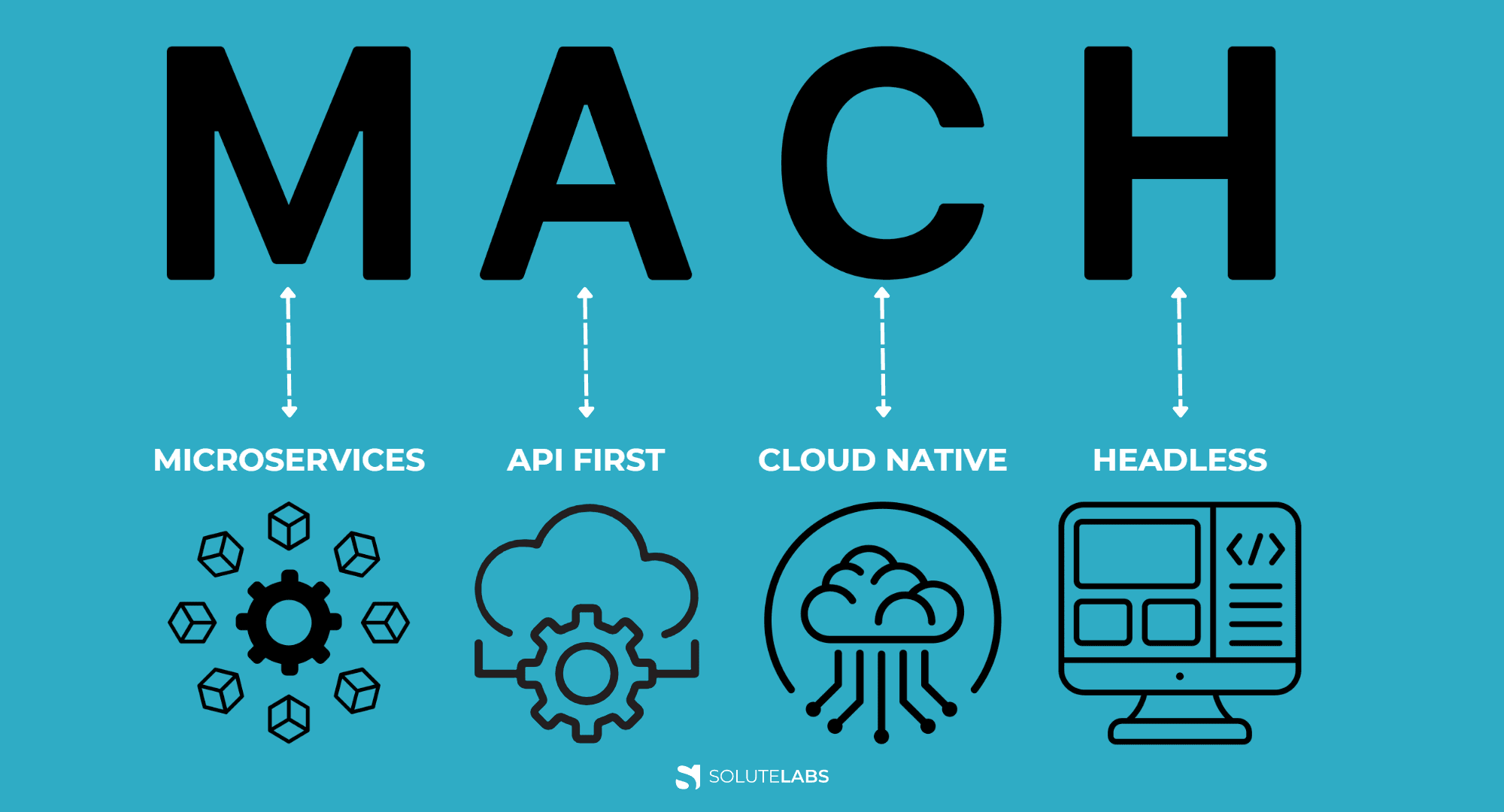
Microservices
The first principle of MACH architecture is Microservices. In this approach, applications are built as a collection of independent, modular services that communicate with each other through APIs. Each service has a specific, well-defined responsibility and can be developed, tested, and deployed independently. This means that changes or updates can be made to one service without affecting the entire application, making it easier to maintain and scale over time.
One of the key benefits of Microservices is that it enables teams to work in parallel, as each service can be developed and tested separately. This speeds up the development process, reduces the risk of errors, and makes it easier to incorporate new features or functionalities. It also allows for greater flexibility in choosing the right technology for each service, as they can be written in different programming languages or use different frameworks.
API -First
The second principle of MACH architecture is API-first. This means that APIs are the primary way that services communicate with each other, and that they are designed with a clear separation of concerns. APIs are also exposed to external applications and developers, allowing for easier integration with other systems and services.
By taking an API-first approach, organizations can achieve greater flexibility and agility in their digital projects. APIs allow for decoupling of front-end and back-end systems, which can be developed and deployed independently. This makes it easier to add new features or change existing ones without having to modify the entire system.
Cloud - Native
The third principle of MACH architecture is Cloud-native. This means that applications are designed to run on cloud infrastructure, such as Amazon Web Services, Microsoft Azure, or Google Cloud Platform. Cloud-native applications are built to take advantage of the scalability, reliability, and elasticity of cloud resources, and can easily scale up or down as needed.
Cloud-native applications are also designed to be containerized, meaning that they can be packaged and deployed as small, self-contained units. This makes it easier to deploy and manage applications, and ensures that they are consistent across different environments. It also enables organizations to take advantage of the latest cloud technologies, such as serverless computing, without having to worry about infrastructure management.
Headless
The fourth and final principle of MACH architecture is Headless. In a Headless architecture, the front-end presentation layer is separated from the back-end content management system. This means that content can be created and managed independently from the presentation layer, and can be used across multiple channels and devices.
One of the key benefits of Headless architecture is that it enables organizations to create more personalized and engaging experiences for their users. By separating the content from the presentation layer, organizations can create content once and use it across multiple channels, such as websites, mobile apps, or chatbots. This makes it easier to deliver consistent messaging and branding, while also providing a more seamless experience for users.
Benefits of MACH Architecture
MACH architecture offers several key benefits for organizations that are looking to build flexible, scalable, and future-proof digital experiences. These benefits include:
1. Flexibility:
MACH architecture enables organizations to choose the right technology for each service, and to develop, test, and deploy services independently. This provides greater flexibility in adapting to changing business needs, and ensures that applications are always up-to-date.
2. Scalability:
By leveraging cloud-native infrastructure and containerization, MACH architecture enables applications to scale up or down as needed, without having to worry about infrastructure management. This ensures that applications can handle sudden spikes in traffic or usage, and that they can grow as the business expands.
3. Speed:
MACH architecture enables teams to work in parallel, and to develop, test, and deploy services quickly and independently. This speeds up the development process, reduces the risk of errors, and ensures that applications are delivered on time and on budget.
4. Agility:
MACH architecture enables organizations to adapt to changing business needs and customer expectations quickly and easily. By decoupling front-end and back-end systems, and by using APIs to communicate between services, organizations can add new features or functionalities without having to modify the entire system.
5. Personalization:
MACH architecture enables organizations to create more personalized and engaging experiences for their users. By separating content from the presentation layer, and by using APIs to deliver content across multiple channels and devices, organizations can deliver more relevant and targeted messaging to their users.
Examples of MACH Architecture
Many leading organizations have adopted MACH architecture for their digital projects, including:
1. Contentful:
Contentful is a cloud-native content management system that uses a Headless architecture to deliver content across multiple channels and devices. Contentful is API-first, and enables developers to create custom content models and integrate with other systems and services easily.
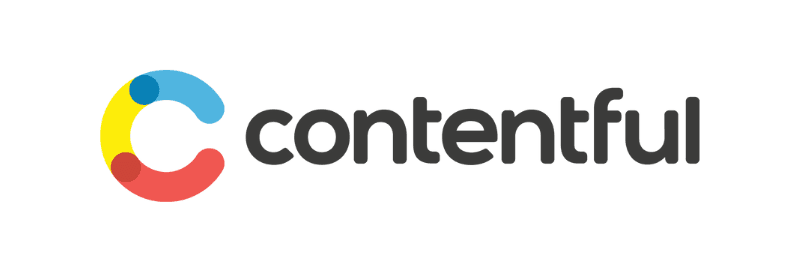
2. Shopify:
Shopify is a cloud-based e-commerce platform that uses a Headless architecture to enable developers to create custom storefronts and shopping experiences. Shopify is also API-first, and enables developers to integrate with other systems and services easily.

3. Moltin:
Moltin is a cloud-native e-commerce platform that uses a Microservices architecture to enable developers to create custom e-commerce experiences quickly and easily. Moltin is also API-first, and enables developers to integrate with other systems and services easily.
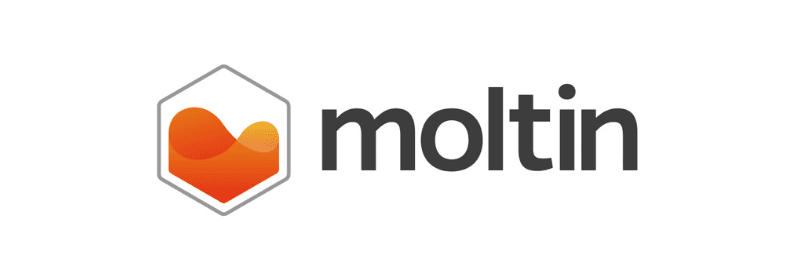
4. Algolia:
Algolia is a cloud-native search-as-a-service platform that uses a Microservices architecture to enable developers to create fast and flexible search experiences. Algolia is also API-first, and enables developers to integrate with other systems and services easily.
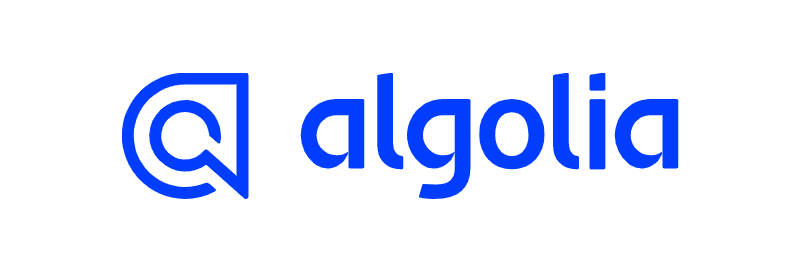
These MACH architecture examples demonstrate how MACH architecture can be used to create flexible, scalable, and personalized digital experiences for a wide range of industries and use cases.
Also, Read: Sanity.io vs Contentful - What are the Differences?
Monolithic Architecture vs MACH: A Comparison
Monolithic Architecture and MACH Architecture are two different approaches to building digital experiences. Here's a comparison between the two:
| Features | Monolithic Architecture | MACH |
|---|---|---|
Architecture | Applications are built as a single, tightly-coupled system | Applications are built as a collection of independent, modular services that communicate with each other through APIs. |
Flexibility | Difficult to modify or update, as changes to one part of the system can affect the entire system | More flexible, as changes or updates can be made to one service without affecting the entire application |
Scalability | Difficult to scale, as the entire system must be scaled up or down as a whole | Designed to be Cloud-Native & Containerized, enabling applications to scale up or down as needed |
Development | Teams must work on the same codebase, which can slow down development and increase the risk of errors | Teams can work in parallel, as each service can be developed and tested separately, speeding up the development process and reducing the risk of errors |
Integration | Integration with other systems and services can be difficult and time-consuming, as the entire system must be modified | APIs enable easier integration with other systems and services, enabling organizations to adapt to changing business needs quickly and easily |
Also, Read: Monolith vs Microservices Architecture: A Detailed Comparison
How to evaluate MACH Architecture?
Evaluating MACH architecture involves assessing whether it is the right approach for your organization's digital projects. Here are some key factors to consider when evaluating MACH architecture:
1. Business Needs:
Evaluate whether MACH architecture aligns with your business needs and objectives. Consider factors such as scalability, flexibility, speed, and personalization, and whether MACH architecture can help you achieve these goals.
2. Technical Expertise:
Evaluate whether your team has the necessary technical expertise to adopt MACH architecture. This may involve assessing whether you have the necessary skills in-house or whether you need to partner with a consultant.
3. Integration:
Evaluate whether MACH architecture can integrate with your existing systems and services. This may involve assessing whether your current infrastructure is cloud-native or whether you need to migrate to a cloud-based environment.
4. Cost:
Evaluate the cost of implementing MACH architecture, including any necessary investments in infrastructure, tools, and personnel. Consider whether the potential benefits outweigh the costs.
5. User Experience:
Evaluate whether MACH architecture can deliver a better user experience for your customers. This may involve assessing whether it can enable greater personalization, faster page load times, and more engaging digital experiences.
Conclusion
MACH architecture is a modern approach to building digital experiences that prioritizes flexibility, speed, and scalability. By using Microservices, API-first, Cloud-native, and Headless principles, organizations can create applications that are easy to maintain, scale, and adapt to changing business needs. MACH architecture also enables organizations to create more personalized and engaging experiences for their users, and to integrate with other systems and services easily. By adopting MACH architecture, organizations can stay ahead of the curve and deliver digital experiences that are future-proof and competitive in today's digital landscape.
